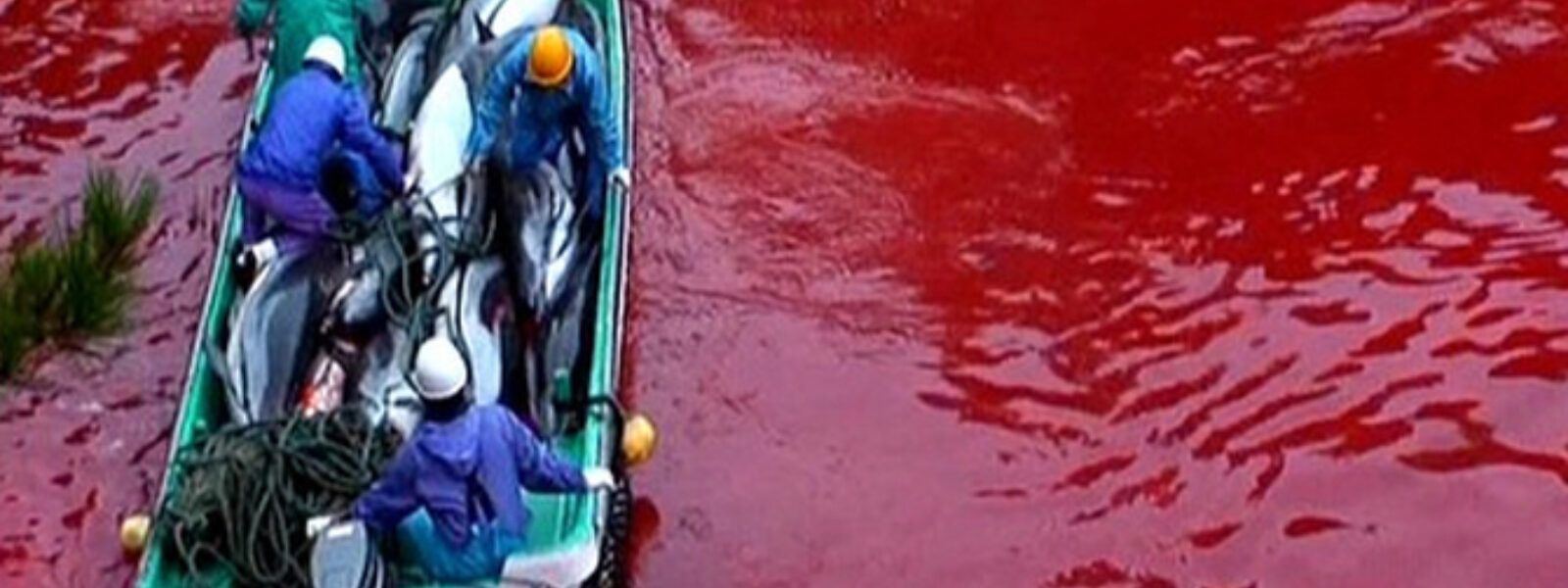

Time is passing in Taiji, Japan, and the aggressive hunts for dolphins continue. This year is no different from past years, continuing the emphasis on captures of dolphins for the captivity trade, to be sold to aquariums and swim-with-dolphins facilities throughout Japan and in China, which has a booming business in new aquariums.
Indeed, according to Reuters, China currently has more than 60 marine parks and is adding a new aquarium every month (36 were projected to open in the next two years). Virtually all of the performing dolphins for these parks come from the hunts in Taiji, Japan.
Beluga whales and orcas, which are also popular for shows, are caught in the wild in Russia for export to China, although local Russian conservationists along with IMMP and other organizations have spearheaded efforts to halt the exports and captures in Russia.
Taiji dolphin hunters get far more money for a trained live dolphin, sold on the world market for up to $150,000US or more, than they get from selling a dead dolphin for meat to local markets, where a dolphin can bring in $500 to $600US for its meat. These economics have freed the Taiji hunters to continue killing and catching dolphins, as the live catch, ripping a dolphin from its mother and family for a life in a small tank, subsidizes the slaughter of the innocents.
The current season of slaughter began on Sept. 1st, 2018, and is expected to run for 6 months through the end of February 2019. The quota for Taiji, set by the Japan Fisheries Agency, is 2,040 dolphins from nine different species. In recent years, Taiji has not come close to meeting the high quota given by the Fisheries Agency, but still some of the dolphin populations show signs of depletion.
As of January 14th, the hunters have been able to herd 241 bottlenose dolphins into the Cove. The bottlenose dolphins, particularly young and female, are highly prized for captivity as the most tractable animals. Of the 241 captured bottlenose, only 29 were killed for the meat market (some “accidental” deaths are caused by the physiological stress of the dolphin drive hunts), while 127 were kept for training for captivity. 75 were herded back into the sea after being held behind the nets for days of sorting and choosing by the dolphin trainers representing the many marine parks. Since the 75 herded out to sea aren’t counted against the quota, the hunters can still target more bottlenose dolphins over the next few weeks of the season.
91 beautiful striped dolphins have been captured, with 86 killed for meat and 5 kept for captivity, despite the fact that these dolphins do poorly in tanks.
117 melon-headed whales, a new species just added to the quota last season, have been captured, with 78 killed for the meat market and 5 kept for captivity, and 33 were released and herded back out to sea.
These dolphins that have been released and that avoid the direct killing are likely doomed themselves, having gone through the trauma of having their pod mates slaughtered or taken away, and then being expected to renew their hunting and breeding as if nothing happened. The Japan Fisheries Agency and the Taiji dolphin hunters insist on treating these complex beings like fish with no feelings, school structure, or higher intelligence at all.
For Risso’s dolphins, 138 have been captured, with 111 killed for meat and 23 torn from their pods to spend the rest of their lives entertaining people for dead fish. Only 5 were released, surely not viable for going back to living in the ocean.
Another new species added to last year’s quota, 30 rough-toothed dolphins have been captured, with 6 kept for captivity and the remaining 24 released back to the ocean.
So far, no spotted dolphins, white-sided dolphins, pilot whales or false killer whales have been captured at all.
Last season (2017-18) a total of 722 dolphins were either slaughtered or kept for captivity, against a quote of 2,178.
This season’s total, so far, equals 470 dolphins.
Neither captive dolphins for entertainment or dolphins for meat are legitimate reasons to continue these savage and bloody hunts.
Information on dolphin numbers supplied by CetaBase and volunteers in Taiji.
We are working to pressure the Japan government to permanently end the Taiji hunts and whaling in time for the 2020 Tokyo Olympics.
Photo of Taiji dolphin slaughter copyright Oceanic Preservation Society.
Please donate to help end these hunts once and for all.